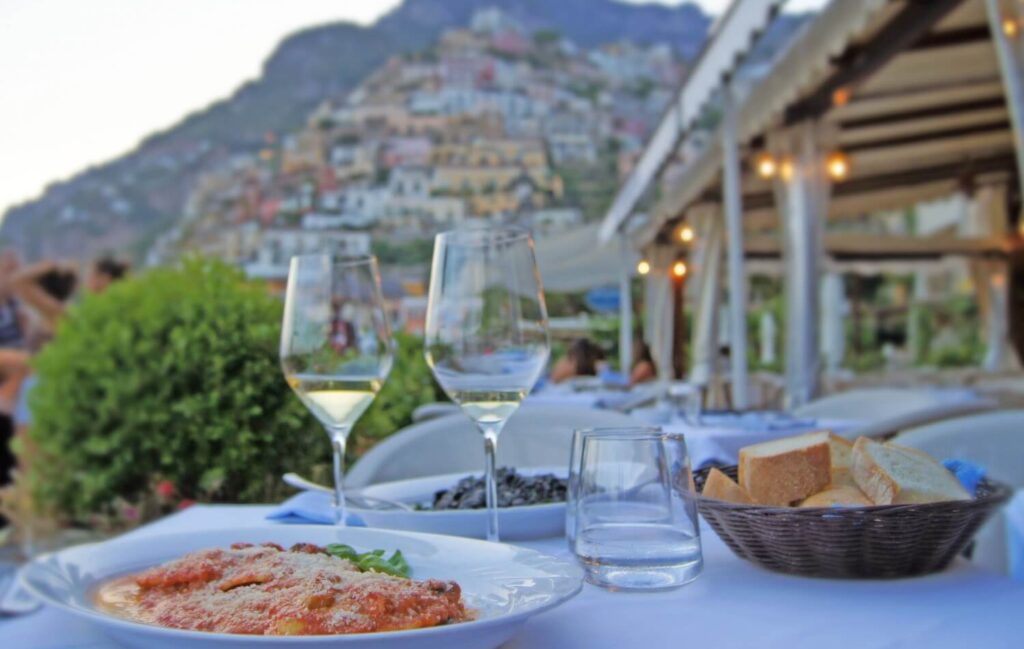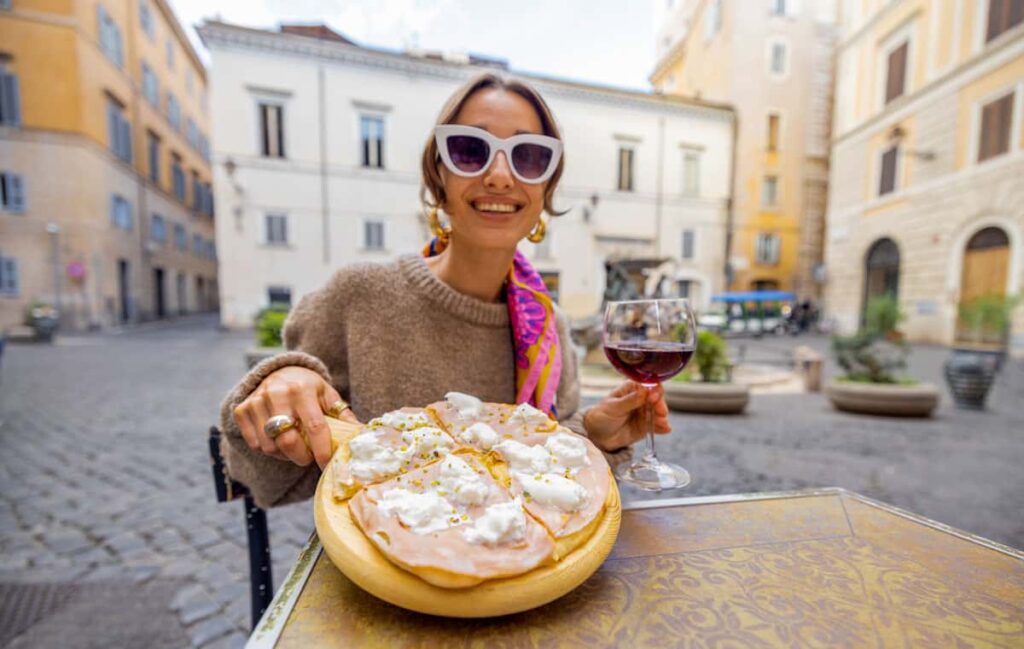Embarking on a culinary tour Italy offers more than just delicious meals. It’s a journey through centuries of tradition, regional diversity, and a deep-rooted cultural passion for food. Whether you’re a seasoned foodie or a curious traveler, planning your trip carefully will ensure a fulfilling and unforgettable experience.
The first thing to consider is your itinerary. Italy’s culinary landscape is incredibly varied, so the regions you choose to visit will significantly influence your gastronomic discoveries.
Northern Italy is known for rich cheeses, risottos, and butter-based sauces, while the south features olive oil-rich dishes, seafood, and bold Mediterranean flavors.
It’s also important to match your travel dates with food festivals and seasonal specialties. A well-timed culinary tour Italy can allow you to experience events like the Truffle Festival in Alba or the Chestnut Festival in Tuscany. These events are not only great for tasting but also for learning directly from local producers.
Logistics matter too. Staying in centrally located accommodations will give you easier access to food markets, restaurants, and local tours. Booking cooking classes, market visits, or wine tastings in advance can also enhance your experience and prevent last-minute hassles.
When planning your culinary tour Italy, don’t forget to include downtime. Italian meals are not rushed affairs they’re leisurely, social, and meant to be savored. Give yourself time to enjoy each experience without the pressure of a packed schedule.
Lastly, dietary restrictions and food allergies should be considered in advance. Most Italian restaurants are accommodating, but it helps to learn basic Italian food vocabulary or carry a translation card to ensure safe and clear communication.
Culinary Tour Italy: Regional Flavors You Must Try
A well-planned culinary tour Italy should highlight the unique tastes each region brings to the table. Italy’s geography, history, and climate have shaped its diverse regional cuisines, and no two areas offer the same dining experience.
In Emilia-Romagna, indulge in tagliatelle al ragù (often incorrectly known as spaghetti Bolognese), mortadella, and the finest Parmigiano Reggiano cheese. Bologna is considered the gastronomic capital of Italy, and for good reason.
Head to Campania for Neapolitan pizza, one of the most famous Italian exports. The combination of a wood-fired oven, fresh tomatoes, buffalo mozzarella, and a chewy crust is something every food lover must experience during a culinary tour Italy.
In Sicily, Arab and Greek influences are seen in dishes like arancini (stuffed rice balls), caponata (eggplant salad), and cannoli. The island’s sweets, seafood, and use of citrus offer flavors unlike anywhere else in the country.
Piedmont, located in the northwestern region, is home to white truffles, Barolo wine, and hearty meat dishes. Tuscans, meanwhile, pride themselves on rustic dishes like ribollita (vegetable soup) and bistecca alla Fiorentina (Florentine steak).
Each stop on your culinary tour Italy reveals a different identity. Instead of expecting spaghetti and lasagna everywhere, approach each region with curiosity and openness to local specialties.
Best Cities And Seasons For A Culinary Experience In Italy
When organizing your culinary tour Italy, city selection and timing are key factors that affect what you’ll taste and how you’ll experience it. Certain cities offer richer food scenes, and different seasons bring unique ingredients to the forefront.
Florence in Tuscany is ideal for lovers of rustic, hearty fare. Spring and autumn are perfect for experiencing dishes made with fresh produce, porcini mushrooms, and truffles. Visit traditional trattorias or local farms for authentic meals.
Bologna is perfect for autumn travel. This season brings fresh truffles, aged balsamic vinegar, and a strong focus on handmade pastas. It’s also less crowded, offering a more relaxed experience.
Naples is the best place for pizza lovers. Available year-round, the pizza here is iconic and protected by the EU’s Traditional Specialty Guaranteed status. Summer is ideal for enjoying seafood-based dishes on the coast nearby.
If your culinary tour Italy includes Rome, try to go in spring or fall when the weather is pleasant, and artichokes, fava beans, and seasonal vegetables are abundant in Roman cuisine.
For wine lovers, the grape harvest season (September and October) is excellent for touring the vineyards of Chianti, Barolo, or Montepulciano. Pairing fresh wines with local meals adds another layer to the gastronomic adventure.
Culinary Tour Italy: Must-Try Street Foods And Fine Dining Spots
Italy’s street food scene is an essential part of any culinary tour Italy. While Michelin-starred restaurants offer a fine dining perspective, street food provides an equally valuable taste of local life.
In Palermo, don’t miss panelle (chickpea fritters), sfincione (Sicilian pizza), and stigghiola (grilled intestines). These vibrant street-side treats are staples of Sicilian culinary heritage.
In Naples, beyond the famous pizza, grab a fried pizza (pizza fritta) or cuoppo di mare (fried seafood in a cone) from a street vendor. The flavors are as rich as any high-end restaurant but in a much more relaxed setting.
Rome is known for suppli (fried rice balls with mozzarella), porchetta sandwiches, and trapizzino (a pizza-pocket filled with traditional Roman recipes). These can be enjoyed while wandering through historic streets.
As for fine dining, cities like Milan, Florence, and Venice boast several Michelin-starred establishments. In Milan, try Il Luogo di Aimo e Nadia, while in Florence, Enoteca Pinchiorri is legendary. Booking in advance is crucial, as these places fill up months ahead.
A great culinary tour Italy strikes a balance between rustic simplicity and gourmet sophistication. Sample dishes from street carts as well as from white-tablecloth venues to get the full picture.
Tips For Pairing Italian Wines With Local Dishes
A crucial part of any culinary tour Italy is learning how to pair Italian wines with the meals they were meant to accompany. Wine is deeply embedded in Italian food culture, and every region has its own unique pairings.
Chianti, with its dry, tannic flavor, pairs beautifully with red meat dishes from Tuscany. When enjoying bistecca alla Fiorentina, a glass of Chianti Classico elevates the meal.
Barolo and Barbaresco from Piedmont go well with game meats, truffle dishes, and aged cheeses. These robust wines are ideal for the cooler months when rich dishes dominate.
If you’re enjoying seafood dishes along the Amalfi Coast or in Sicily, opt for light whites like Falanghina or Grillo. These crisp wines highlight the freshness of fish without overpowering the dish.
Prosecco from Veneto is a go-to for antipasti or lighter fare, and Lambrusco, a sparkling red from Emilia-Romagna, is surprisingly good with cured meats like prosciutto.
During your culinary tour Italy, consider visiting local wineries for tastings. Many offer food pairing experiences that teach you how to match wine with flavor intensity, fat content, and acidity of dishes.
Culinary Tour Italy: Cultural Etiquette And Dining Habits
Understanding cultural etiquette enhances your culinary tour Italy and shows respect for the traditions tied to food. Meals in Italy are more than just sustenance they are rituals with social significance.
First, never rush a meal. Meals are meant to be enjoyed slowly, often in multiple courses. Antipasti (starters), primi (first course), secondi (main dish), contorni (sides), and dolci (dessert) are all common elements of an Italian dining experience.
Always greet your server with a friendly “Buongiorno” or “Buonasera” depending on the time of day. Italians value politeness and formalities, even in casual settings. Don’t expect free water or bread unless specifically offered.
Also, tipping is appreciated but not obligatory rounding up the bill or leaving small change is usually sufficient. In family-run trattorias, menus might not be available in English, and daily specials may only be spoken. Embrace this as part of the charm of your culinary tour Italy.
Lastly, avoid ordering cappuccino after noon, as it’s seen as a breakfast drink. If you want coffee after a meal, espresso is the norm. By respecting these customs, your food experiences become more immersive and enjoyable, enriching your journey through Italy’s culinary landscape.
See you in the next post,
Anil UZUN


